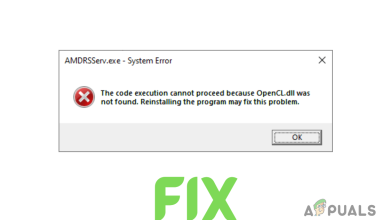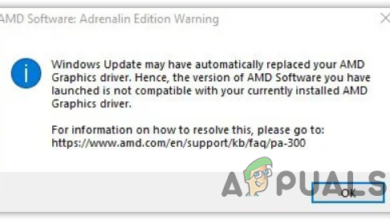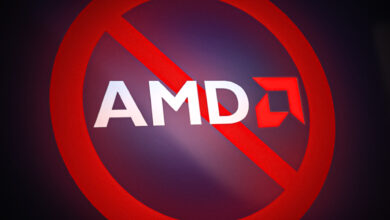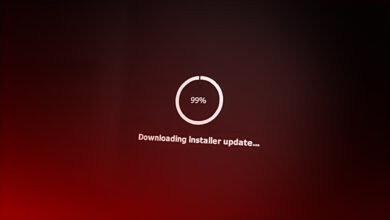How to Resolve AMD Driver Timeout Issue on Windows?
One of the most common errors AMD users may encounter with an AMD card is the driver timeout error message. This issue has been reported on nearly all types of AMD cards across various games and programs. Some users experience crashes, with or without a black screen, to the desktop along with the error message, while others may need to force restart their systems.

The AMD display drivers might continuously crash due to the timeout issue for several reasons, but the primary causes have been identified as:
- Outdated Operating System: An outdated OS can become incompatible with the latest AMD drivers, resulting in the timeout issue.
- Insufficient Virtual Memory Size: If the system’s virtual memory is not adequately sized, the AMD driver may fail to load properly.
- Outdated, Corrupt, or Incompatible Drivers: If the AMD driver is outdated, corrupt, or not compatible with the system, it may cause the timeout issue.
- Incorrect Radeon Settings Configuration: Improper configurations in the AMD Radeon software settings, such as Shader Cache or FreeSync, can cause prolonged driver loading times, thus leading to the timeout issue.
1. Update the Operating System to the Latest Build
An outdated operating system might not be compatible with the AMD driver, causing the timeout issue. Update the OS to the latest build to fix the AMD driver timeout.
- Press the Windows key, search for ‘Check for Updates’, and open the System Settings.
- In the update window, click on the Check for Updates button. If there are available updates, download and install them. Ensure you install any Additional Updates as well.
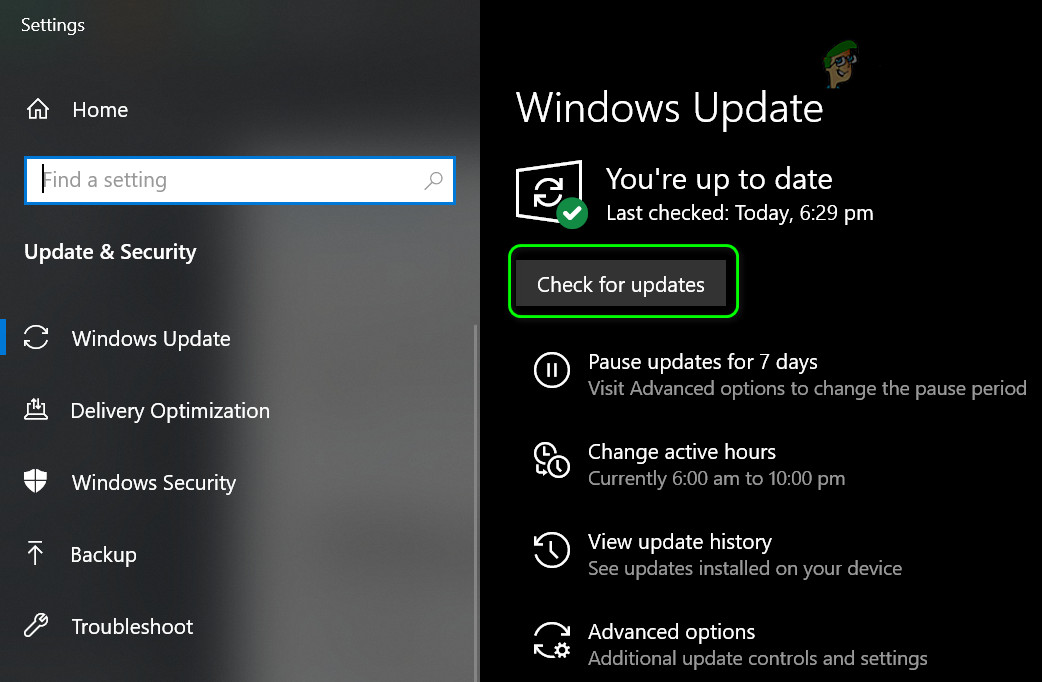
Check for Windows Updates - Restart your system. After rebooting, check if the AMD Timeout issue has been resolved.
- If an OS update didn’t fix the problem, consider performing the following scans: SFC, DISM, and ChkDsk.
If the issue persists, try thoroughly cleaning your system/GPU, and make sure that all RAM sticks are properly seated.
2. Set Your PC to the Best Performance Mode
If your PC is set to battery-saving mode, it might not load essential modules for the AMD driver operation in time, leading to a driver timeout. Set the PC to the best performance mode to address this issue.
On laptop:
- Click on the Battery icon in the system tray and move the Power Mode slider to the right end for the best performance.
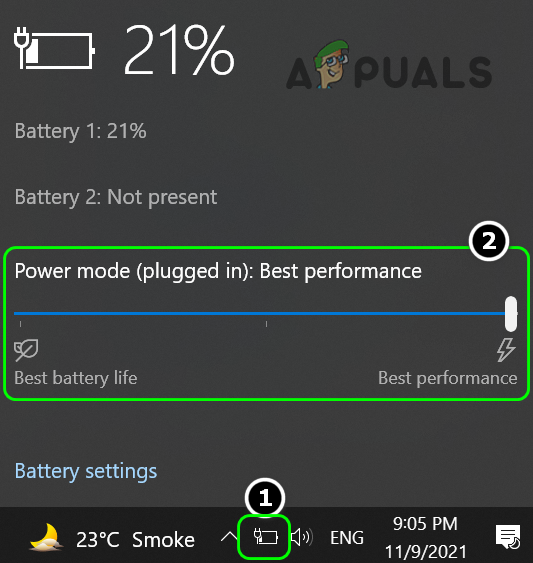
Set Power Mode to Best Performance - Verify if the driver timeout issue has been resolved.
On PC:
- Right-click the Windows icon and select Power Options.
- Under Related Settings, open Additional Power Settings and select Create a New Power Plan.
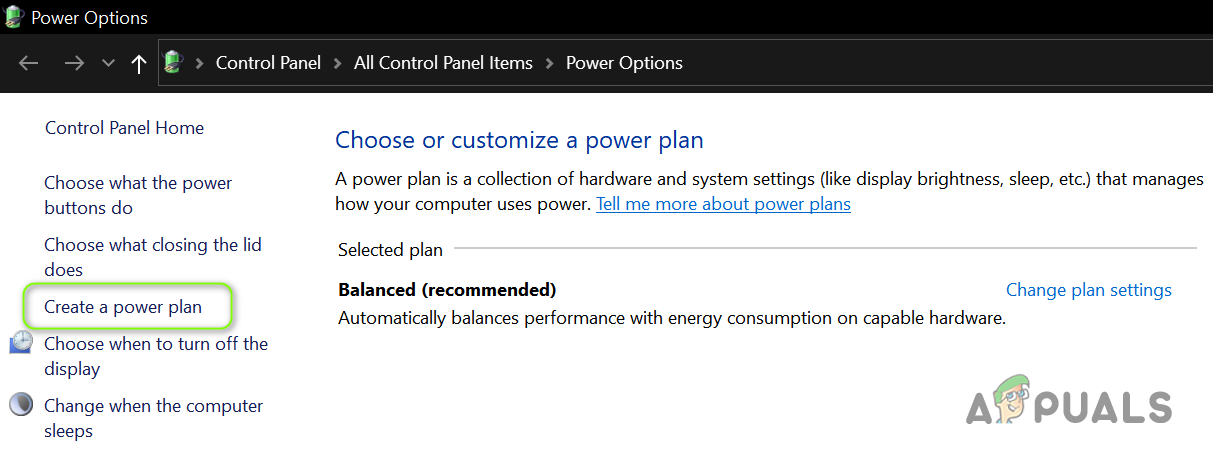
Create a Power Plan - Choose High Performance and click Next.
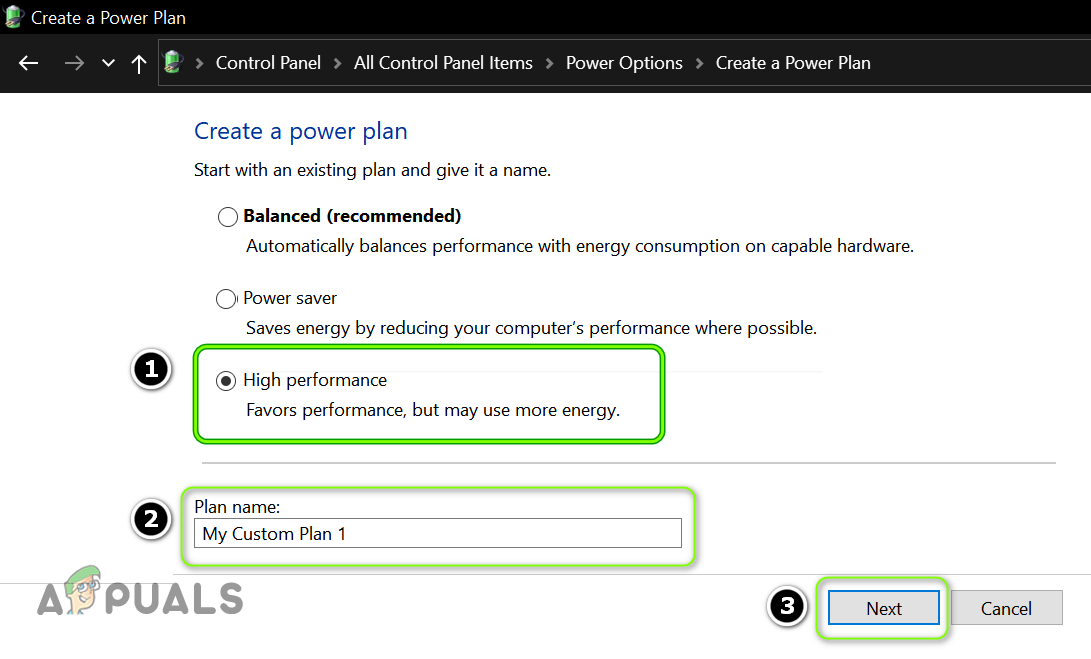
Create a New High-Performance Power Plan - Click Create and restart your PC.
- After rebooting, verify if the AMD driver issue has been resolved.
3. Increase the System’s Virtual Memory
Virtual memory is a portion of your hard disk that the system uses as RAM in certain situations. If the virtual memory is insufficient, the system might fail to load the AMD driver, causing the timeout issue. Increasing your system’s virtual memory could solve the problem. Before proceeding, ensure you have enough space on your drives—this can be achieved using Disk Cleanup or by removing temporary files.
- Type ‘View Advanced System Settings’ in the search bar, and open it.
- Access Performance Settings and go to the Advanced tab.
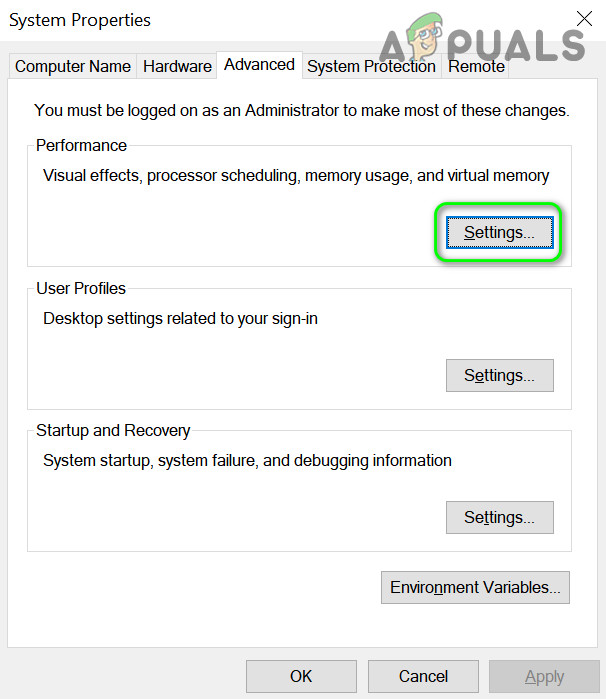
Open Performance Settings in Advanced System Settings - In the Virtual Memory section, click on Change.
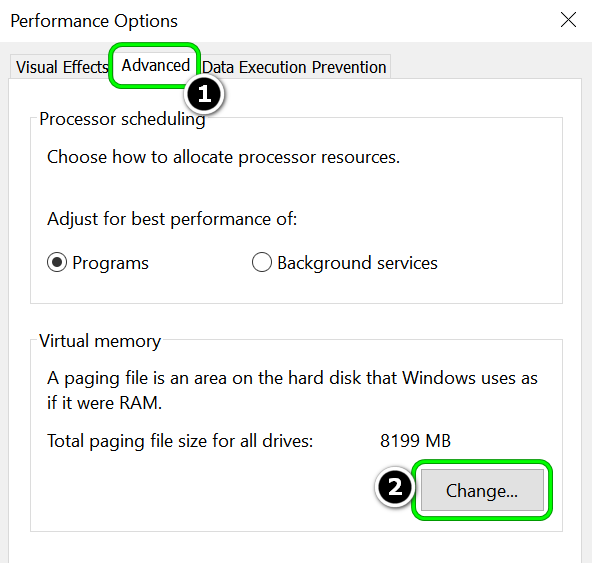
Click on Change in Virtual Memory Section - Uncheck Automatically Manage Paging File Size for all drives, and select your system drive.
- Choose Custom Size, and in the Initial Size box, enter the recommended value from the total paging file section (e.g., 1908 MB).
- In the Maximum Size box, enter the currently allocated value from the total paging file section (e.g., 6144 MB).
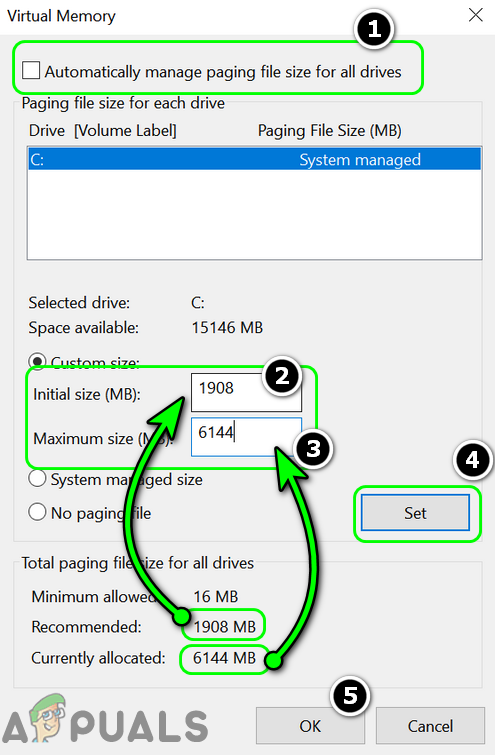
Set Custom Size of Virtual Memory of Your System - Click Set, apply the changes, and restart your computer when prompted.
- After rebooting, check if the AMD driver timeout issue is resolved.
4. Decrease the Refresh Rate of Your Display
If your display’s refresh rate is not compatible with the AMD driver, it could lead to the timeout issue. Reducing your display’s refresh rate may solve the problem.
- Right-click on your desktop and select Display Settings.
- Open Advanced Display Settings and click on Display Adapter Properties.

Open Advanced Display Settings - Select the display and expand the Refresh Rate dropdown menu.
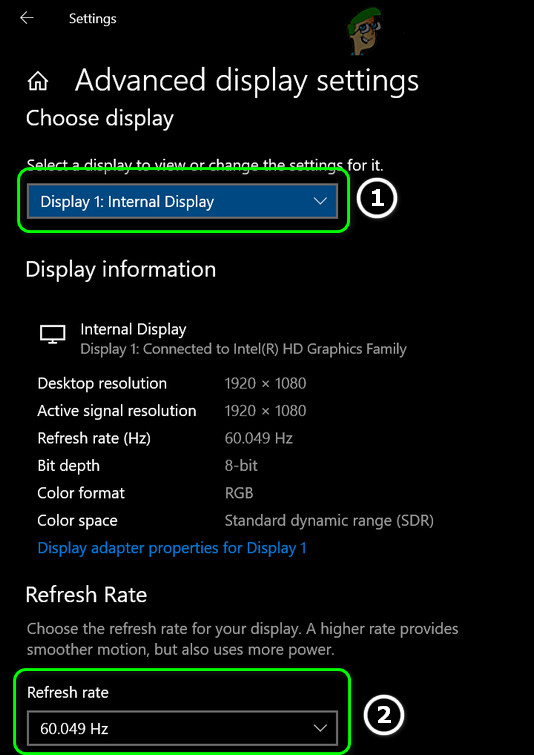
Set the Refresh Rate in the Windows Settings - Choose the lowest refresh rate option available (e.g., 100 Hz if you have a 144 Hz display), and apply your changes.
- Restart your computer and check if the timeout issue is resolved.
- If the problem continues, try disabling or enabling the AMD graphics card in the Device Manager.
5. Disable Fast Startup of the System
Windows defaults to using Fast Startup, a feature that combines sleep and hibernation modes to achieve faster boot times. While it’s convenient, it can sometimes cause issues with resources required for AMD driver operations, resulting in timeout errors. Disabling Fast Startup may help resolve the issue.
- Right-click the Windows icon and select Power Options.
- In the right pane, click Additional Power Settings, and in the left pane, choose Change What the Power Buttons Do.

Open Additional Power Settings - Click Change Settings That Are Currently Unavailable.
- Uncheck the Turn on Fast Startup option and click Save Changes.
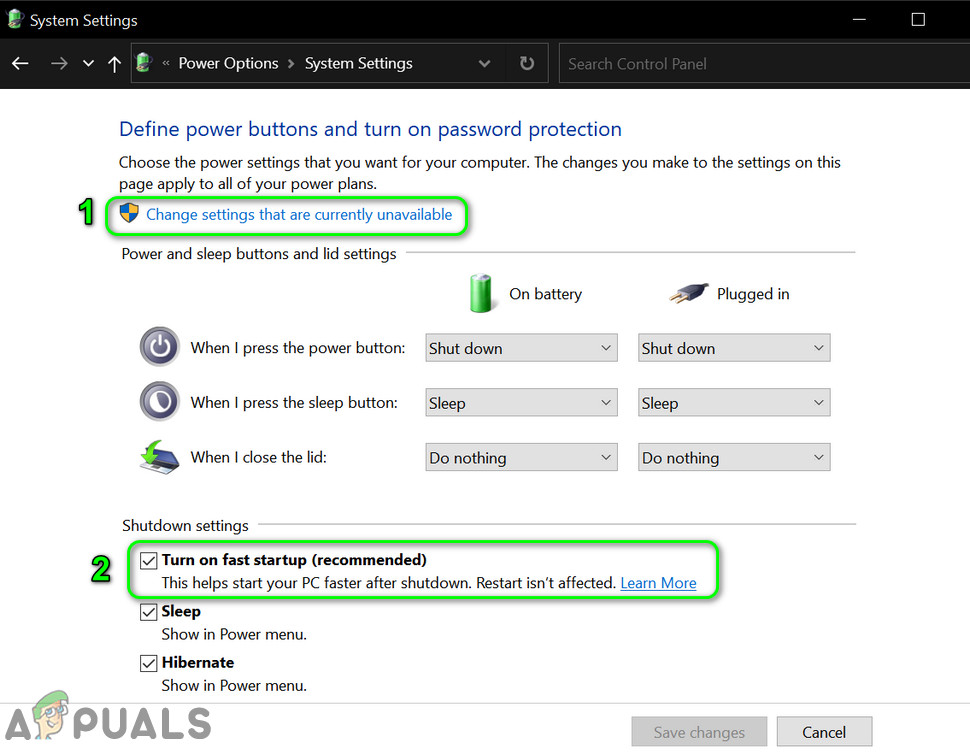
Disable Fast Startup - Restart your computer and verify if the AMD driver timeout issue is gone.
If the timeout problem persists, try performing a clean boot of the system.
6. Disable Issue Reporting of the AMD Driver
In cases where the AMD driver timeout dialog box is a nuisance but the system operates correctly, disabling the issue-reporting feature in AMD Adrenaline software might be beneficial.
- Open AMD Adrenaline software and click on the Settings icon.
- Toggle off the Issue Reporting switch and then restart your system.

Disable Issue Reporting of AMD - After rebooting, check if the AMD Driver Timeout dialog no longer appears.
7. Update, Reinstall or Try an Older AMD Driver
An outdated, corrupted, or incompatible AMD driver can trigger the timeout error. To resolve this, you might need to update, reinstall, or revert to an older version of the AMD driver.
- Right-click on your desktop and choose AMD Radeon Settings.
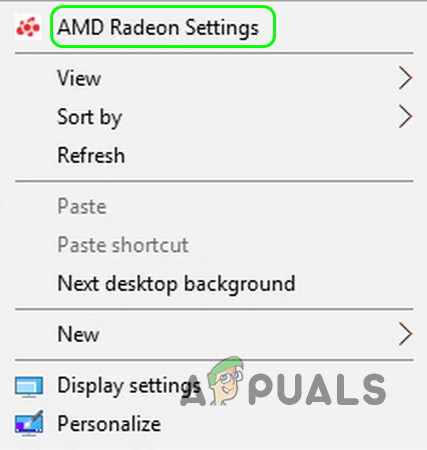
Open AMD Radeon Settings - Go to Updates (located near the bottom left of the window) and select Check for Updates.

Check for AMD Drivers Updates - Download and install the update if a new driver is available.
- Restart your computer and check if the timeout issue has been resolved.
- If updating didn’t help, consider using the offline installer of the newest drivers without uninstalling the previous version.
If that doesn’t work, try clean installing the driver it.
- Download the latest AMD drivers from the AMD website.
- Download the AMD Cleanup Utility or use DDU (Display Driver Uninstaller) from the following link:
https://www.amd.com/en/support/kb/faq/gpu-601
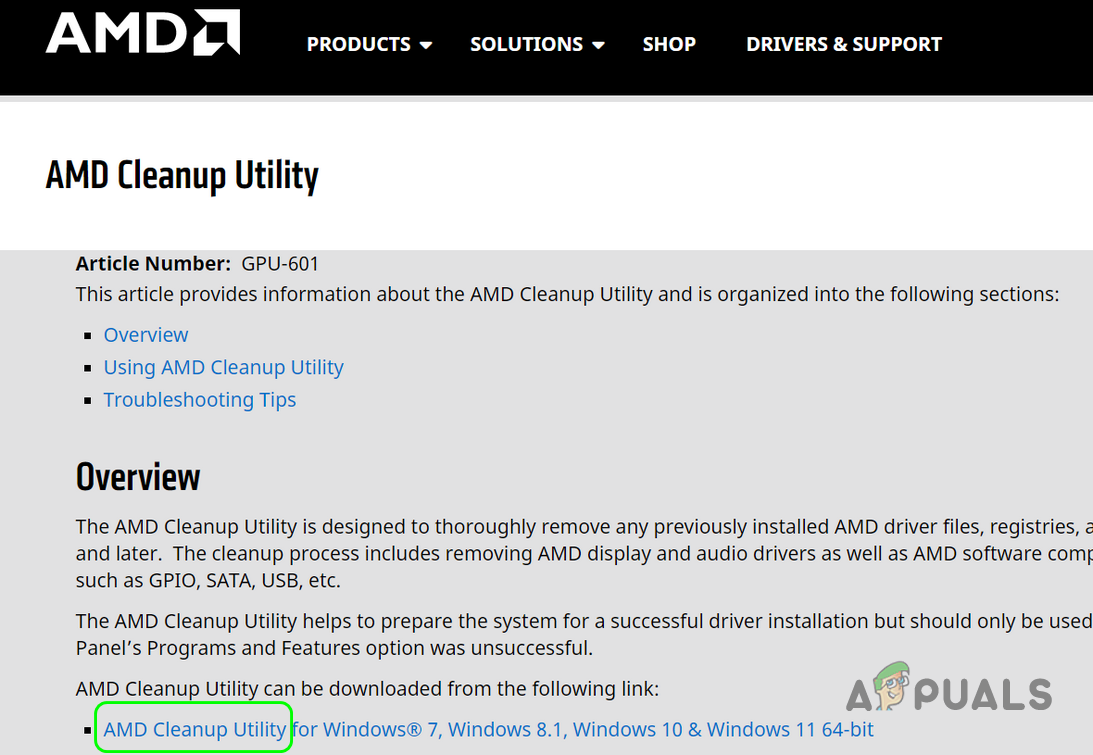
Download AMD Cleanup Utility - Run AMDCleanupUtility.exe.

Launch the AMD Clean Up Utility - Confirm to reboot your system in Safe Mode and follow the instructions.
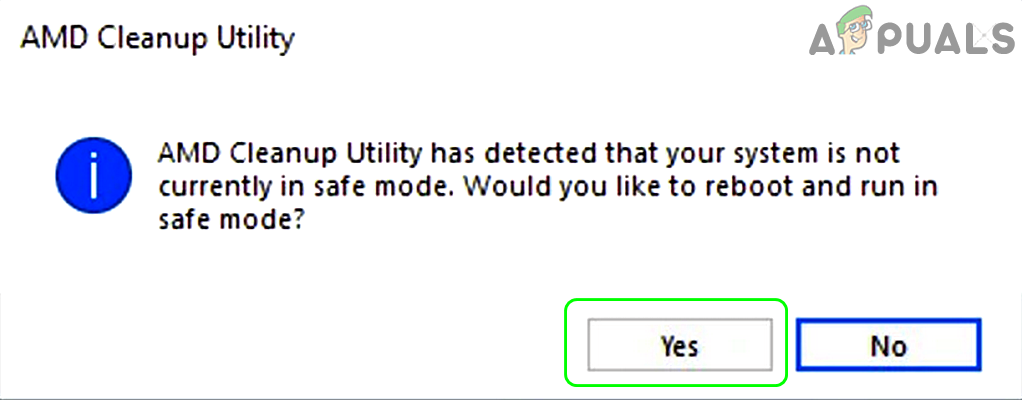
Confirm the AMD Cleanup Utility to Launch Your System in Safe Mode - Wait until the AMD drivers, applications, and utilities are removed. The screen may flicker during the process.

Wait till the AMD Cleanup Utility Removes Drivers, Applications, and Utilities - Click Finish in the AMD Cleanup Utility dialogue box, and then click Yes to restart your computer.

Click Finish When AMD Cleanup Utility Completes - Wait for at least 3 minutes after the system reboots before launching anything, then reboot your PC again.
- Install the AMD drivers, sticking to the default settings during the installation process.
- Once the installation is complete, reboot your PC.
- After rebooting, enable LAN/Wi-Fi and check if the AMD driver timeout issue has been resolved.
- If the problem persists, uninstall the drivers, as mentioned above, and restart your PC.
- During the reinstallation process, select the Factory Reset checkbox to ensure a clean installation.

Select Factory Reset When Installing AMD Driver - Reboot your PC, upon restart, check if the AMD driver timeout issue has been resolved.
If the latest drivers are incompatible with your system, reverting to an older driver version may resolve the issue.
- Uninstall the AMD driver as previously instructed and navigate to the AMD support website:
https://www.amd.com/en/support
- Select your AMD product and click Submit.

Select Your AMD Product and Click Submit - Scroll down and click on Previous Drivers.
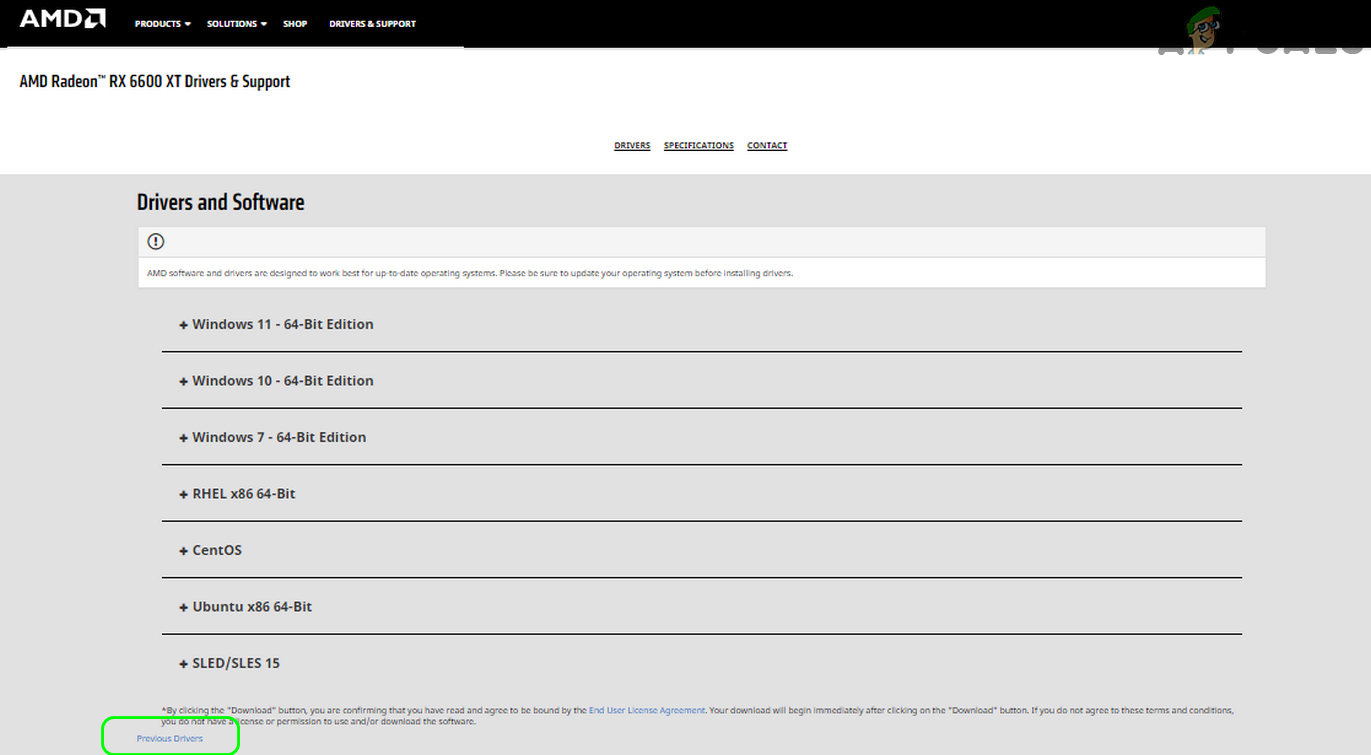
Download Previous Drivers of the AMD Card - Download and install an older driver version.
- After installation, restart your system and verify if the timeout issue is resolved. If not, try other older drivers, testing one version at a time, to see if any resolve the issue.
8. Install the AMD Driver Without the Adrenaline Software
- Uninstall the AMD driver, as mentioned before, and restart your system. Download the latest AMD drivers with Adrenaline software.
- Launch the installer with administrative privileges and click on Install to begin file extraction. Note the path where files are extracted.
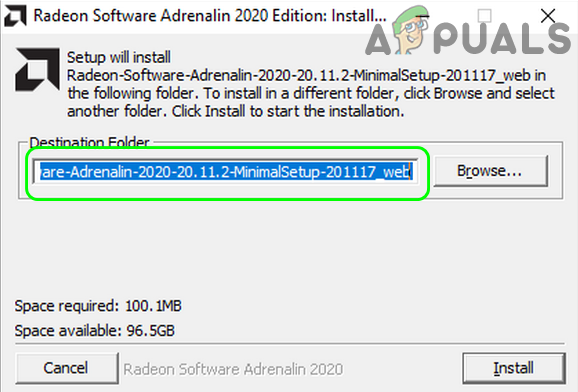
Copy the Path of the Extraction Folder of the AMD Driver - Cancel the installation process once file extraction is complete.
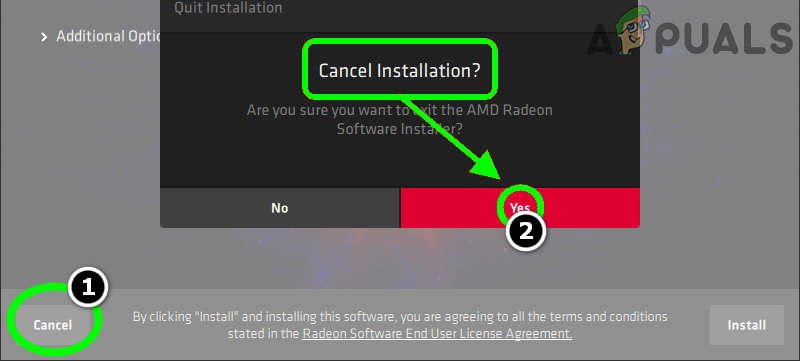
Cancel the AMD Installation - Go to the Device Manager, expand Display Adapters, and right-click on the AMD card.
- Select Update Driver, then choose Browse My Computer for Drivers.
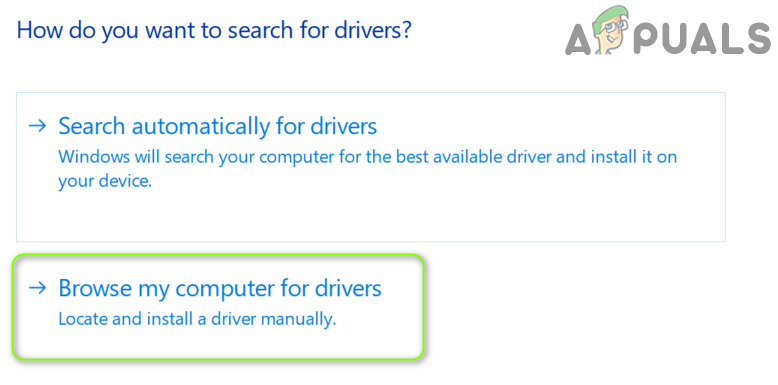
Select Browse My Computer for Drivers - Navigate to the path of the extracted driver folder.
- Click Next and install the AMD driver.
- After installation, reboot your PC to see if the timeout issue has been resolved.
9. Clear the Shader Cache
The Shader Cache helps boost loading times for games by storing frequently used game shaders. If the shader cache is corrupt or overloaded, it could cause the timeout issue. Clearing the shader cache might resolve the problem.
- Open the AMD Adrenalin application, navigate to Settings, and select the Graphics tab.
- Click on Perform Reset next to Shader Cache and confirm the action.
- Check if the AMD driver issue is resolved. You might need to clear the Shader Cache each time you launch a game.

Reset the AMD Shader Cache - If the issue persists, try setting the game profile back to Standard and see if that resolves the error.
10. Disable FreeSync and Virtual Super Resolution in AMD Settings
FreeSync aims to deliver a smoother gaming experience, but it can cause issues if it’s not functioning correctly.
- Launch AMD Radeon Settings and navigate to the Display tab.
- Select your display (if multiple are connected) and switch off AMD FreeSync.
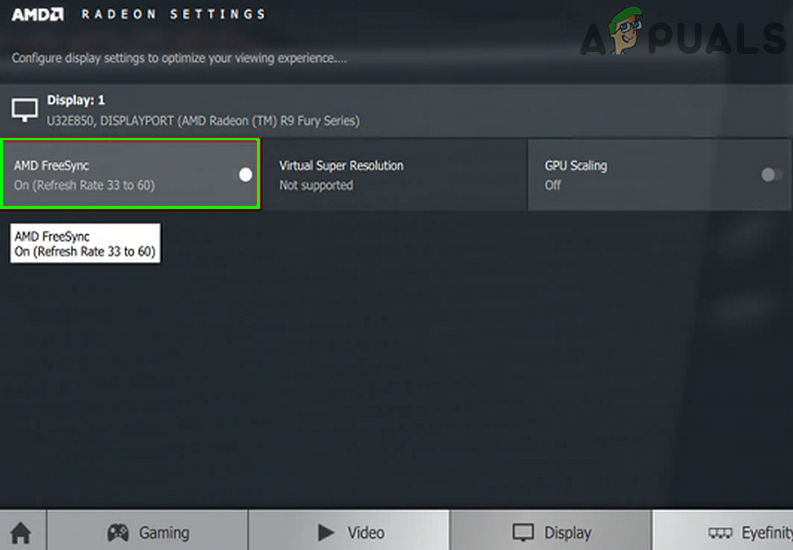
Disable AMD FreeSync - Apply the changes and check if the AMD driver issue is resolved.
- If not, try disabling Virtual Super Resolution.
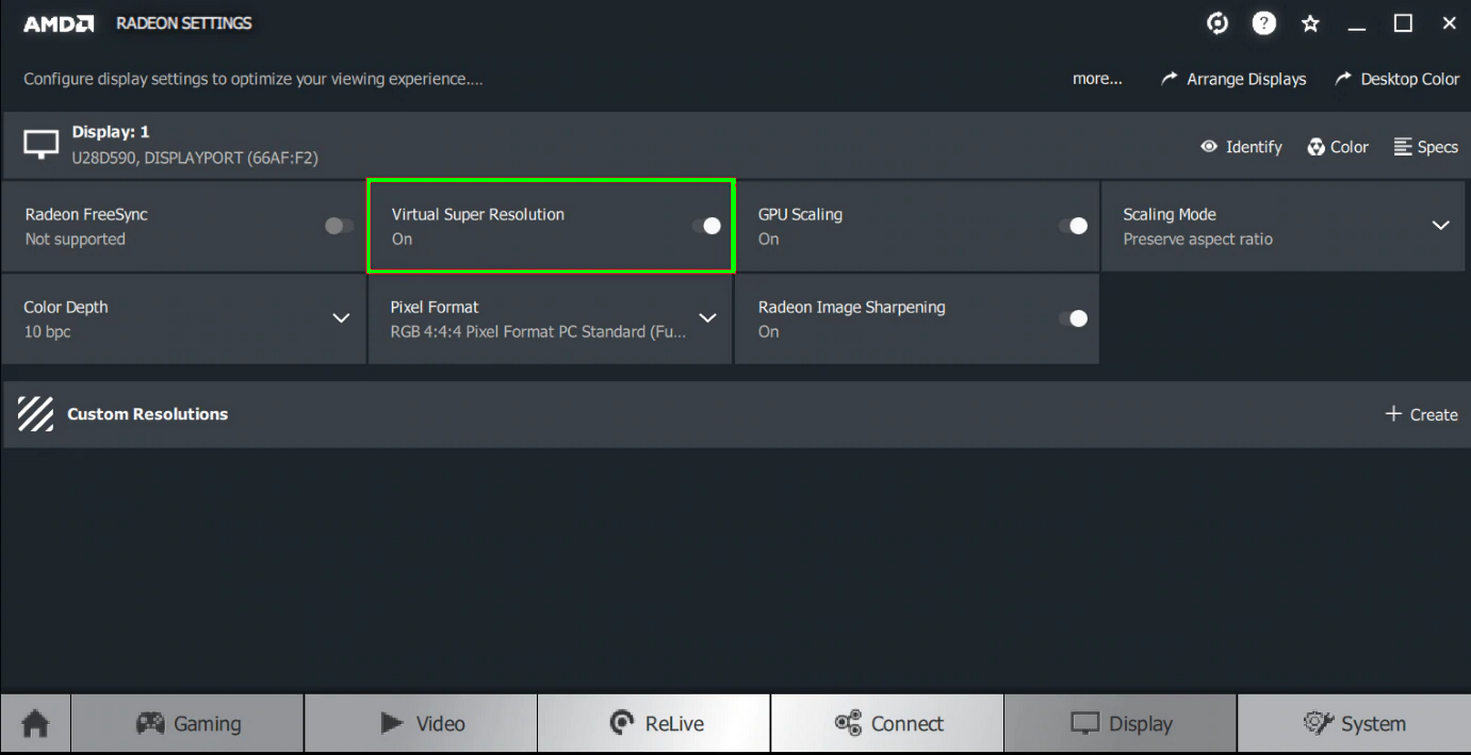
Disable AMD Virtual Super Resolution - Should the issue continue, switch the Graphics Settings to Energy Safe mode to see if that resolves the error.
11. Edit Frequency and Voltage Settings
Modifying the GPU’s frequency and voltage settings can potentially resolve driver issues; however, extreme caution is advised.
Warning: Proceed at your own risk. Some suggested adjustments involve tweaking the graphics card (including overclocking or underclocking), which potentially undermines system stability or may harm your hardware.
- Open the Radeon Software and proceed to the Performance tab.
- Switch to Manual and activate GPU Tuning >> Advanced Control.
- Set the GPU frequency to half its maximum value and apply the changes.
- Check if the AMD driver issue is resolved.
- If it persists, try setting the Frequency to 1350MHz and Voltage to 850 MV after enabling it.
- If the issue is still unresolved, set the Frequency to 2000MHz and Voltage to 1100MV.
- If the problem continues, enable Automatic >> Undervolt GPU.
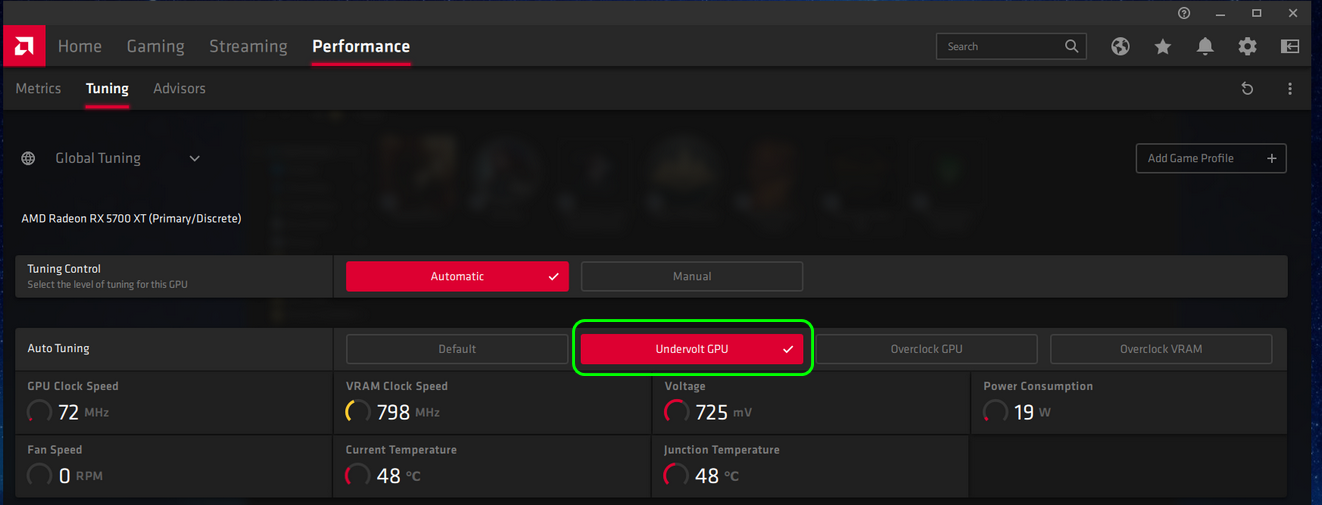
Auto Undervolt AMD GPU
Increasing the power limit of your AMD card can sometimes clear the timeout issue as it provides more power for the GPU’s operation.
- Open the AMD Radeon software and proceed to the Performance tab.
- Navigate to the Tuning section and select Manual.
- Enable Power Tuning and raise the Power Limit by 50%. Then apply the changes.
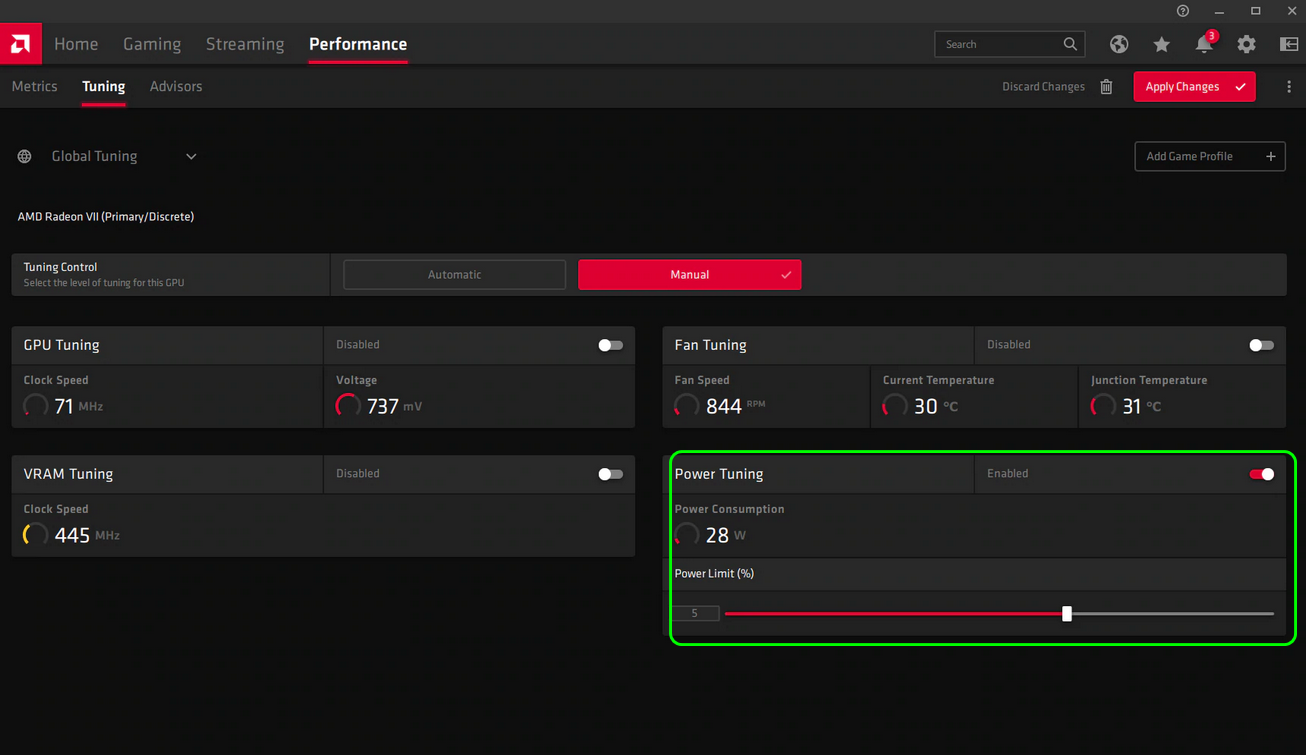
Increase Power Limit of AMD by 50% - Reboot your PC and verify if the driver timeout issue has been resolved.
12. Fine Tune the System’s Fan
Proper fan settings can mitigate overheating issues that may cause driver timeout errors.
- Open the AMD Radeon software and proceed to the Performance tab.
- Select Tuning and activate Fan Tuning.
- Try increasing the Maximum Fan Temperature to 100 degrees to see if that resolves the issue.
13. Edit the System’s Registry
Sometimes, due to system or driver glitches, the timeout problem can arise when the driver takes too long to respond to the operating system. In these cases, increasing the OS’s wait time (TDR Delay) might resolve the issue.
Warning: Editing the system’s registry can be risky; therefore, proceed at your own risk, and ensure you have created a backup of your registry first.
- Press the Windows key, type ‘Registry Editor’, right-click on it, and choose ‘Run as Administrator’.
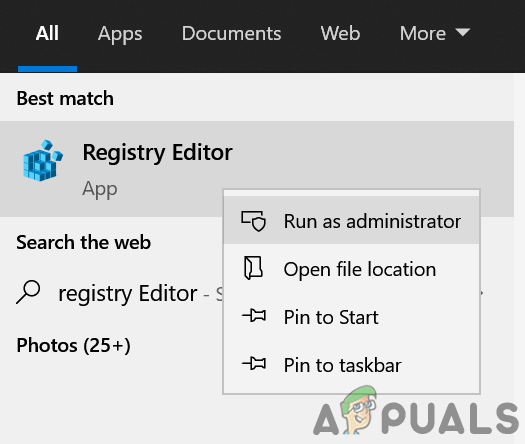
Open Registry Editor as Administrator - Navigate to the following registry path:
HKEY_LOCAL_MACHINE\SYSTEM\CurrentControlSet\Control\GraphicsDrivers

Create a TdrDelay Registry Key and Set its Value to 8 - In the right pane, right-click on GraphicsDrivers and select ‘New > Dword (32-bit) Value’.
- Name the key ‘TdrDelay’ and set its value to 8 or 30.
- Right-click on GraphicsDrivers again and select ‘New > Qword (64-bit) Value’.
- Name the new key ‘TdrDelay’ and set its value to 8 or 30.
- Close the Registry Editor and restart your computer.
- Check if the AMD issue has been resolved after restarting.
- If the problem continues, open Notepad and paste the following text:
Windows Registry Editor Version 5.00 [HKEY_LOCAL_MACHINE\SYSTEM\CurrentControlSet\Control\GraphicsDrivers] “TdrDelay”=dword:0000000a “TdrDdiDelay”=dword:00000019
- Save the file with a .reg extension, such as TDR.reg, and close Notepad.
- Double-click the .reg file and select ‘Yes’ to add the contents to the registry.
- Reboot your PC and check if the AMD driver timeout issue has been resolved.
If the issue still persists and it’s occurring in a specific program or game, reinstalling that application (like Adobe After Effects) might help. Be aware that certain games (such as TBC Classic) may prefer DirectX 11; ensure they are using the proper DirectX version. For browsers experiencing the timeout error, such as Chrome, disabling hardware acceleration may resolve the issue. Some users have also reported that simply keeping the AMD Radeon software running in a minimized state fixed the issue for them—it might be worth trying.
In the event that none of the above solutions are effective, consider resetting your PC to its default settings or reinstalling the operating system. If the issue reappears after these measures, it may indicate a hardware problem with the GPU, which can be verified by using another graphics card in the system or testing your AMD card in a different PC.
